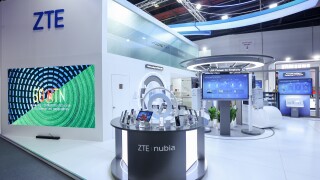
The launch of a brand new subsea cable between Greece and Italy is imminent. Esther Garcés, CEO of the company that has deployed it, IslaLink, explains how the IONIAN cable will offer a highly robust and diverse route that opens up fresh opportunities in the region and promises to accelerate its digital journey.
What do you see as the main current focus areas and trends for cables in the global telecoms industry?
There’s an incredible demand for data capacity, which is growing and growing. This obliges all players in the market to increase their transmission capacities and means that a lot of submarine cables are being built in all regions.
It’s not just the usual transatlantic or transpacific routes, but also routes reaching underserved markets and that provide diversity to some of the existing ones – like the IONIAN cable we’ve been rolling out between Greece and Italy.
What trends have you seen in the subsea cable market in recent years?
During the past decade, the leadership of submarine cables has been shifting from telecoms operators to OTTs. Nevertheless, collaboration between all stakeholders is still necessary, and private consortia involving both types of partner are more and more common.
The role of neutral and independent infrastructure operators such as IslaLink makes sense in markets where there’s not enough demand for operators to invest independently, or when it’s too complex to gather a consortium. Part of our vision is to provide this type of infrastructure in areas where some other models won’t work. Having been around for more than 20 years, we have a good knowledge of such markets.
When will the IONIAN submarine cable launch and what benefits will it bring to the market?
We have successfully completed deployment of the submarine cable this January. We are now integrating the terrestrial and submarine transmission networks and expect the system to be ready for service in April.
The IONIAN system, which has been designed to be as robust as possible, connects Milan and Rome to Athens and Thessaloniki, landing at Crotone in Italy and Preveza in Greece. We use two distinct routes in each country on the terrestrial part of the system, enabling us to deliver diverse protected services. This approach is consistent with the choice of submarine route, which was specially conceived to avoid hazards.
The cable is able to deliver up to 360Tbps, a huge increase in capacity to meet future needs. Meanwhile, the Greek telecommunications landscape has seen little investment in the past 20 years and this is the right moment for the region to catch up with the rest of Europe.
The appetite for that to happen has been confirmed by the many announcements in the region on new data centres, cloud regions and submarine cables since we started the IONIAN project two years ago. We strongly believe that Greece is going to become an important hub in the Mediterranean, especially given its position in the EU, as well as being close to the Middle East and Asia.
Why did you choose to land the IONIAN cable in Crotone, a new name in the submarine world, rather than other more established landing points in Italy?
Firstly, as Crotone is a very southern city in Italy, it means a shorter path from Preveza in Greece than with other routes. This means we don’t have to put in repeaters to extend transmission.
The route is attractive for other technical reasons too. One is that it’s a sandy area, making it easy to land. It also quickly enters deep waters, meaning it doesn’t have to travel a long way through shallow sea. As most of the route is in deep waters, that makes it more robust too.
Meanwhile, because we’ve pioneered this area as a landing point – having built a big landing station and fronthaul infrastructure – it’s ready to welcome up to three more cables without them needing to go through the construction we have already gone through.
How does the IONIAN cable build on IslaLink’s previous experience in the market and complement its portfolio?
IslaLink has gained long experience in the deployment and operation of international submarine cables since it started in 2001, including connecting the Iberian Peninsula to the Balearic Islands via the BalaLink cable and helping develop the transatlantic EllaLink cable that was later spun off.
The development of the IONIAN system takes advantage of this experience and will be integrated with IslaLink’s in-house network operations centre in Spain. From there, it will be operated in conjunction with local specialists in both Greece and Italy. The system will add to our existing footprint and assets, expanding our international reach.
How do you envisage the future of the IONIAN cable and IslaLink itself?
A submarine system like IONIAN is a long-term investment that has been designed to cope with the increasing demand expected in the coming decades.
We are already analysing the potential for extension of the system to neighbouring hubs and there are also opportunities in some underserved areas around Europe. We’re on the lookout for further investments to keep growing the company, backed by its owner, Fiera Infrastructure.
We strongly believe there is a great space in the market for a company like us that provides high-quality infrastructure and service, with the flexibility that customers are looking for.




